As an Amazon Associate I earn from qualifying purchases.
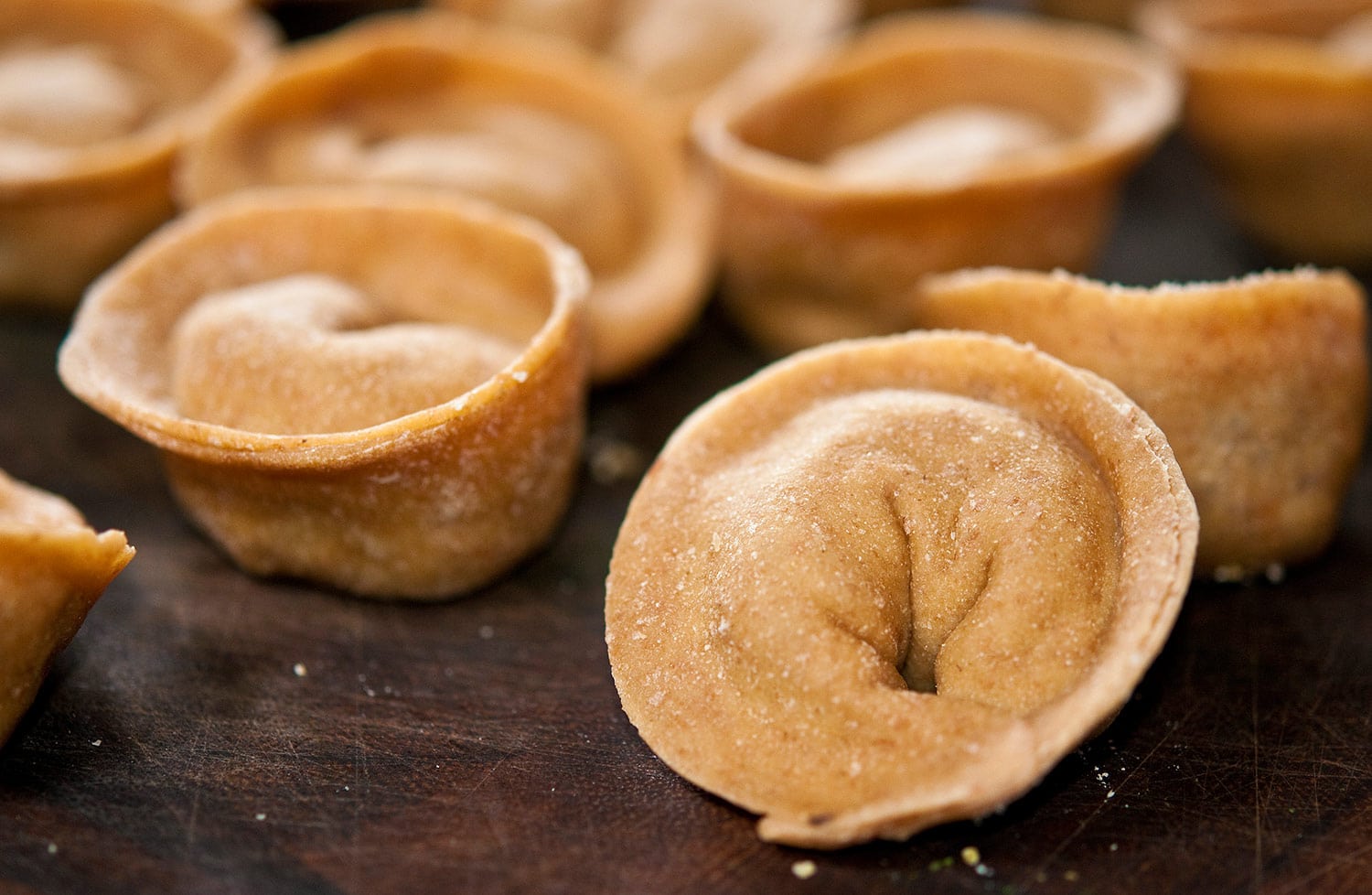
For some of you, the fact that black bear can be good eating is no great surprise: The hunting and eating of bears has been going on long before we out-competed the horrific (and thankfully extinct) cave bear for the best places to shelter ourselves from the rigors of the Ice Age. Bear hunting has been part of American life since we arrived in the 17th century, and roast bear has been on the menu for more than a few state dinners during our nation’s youth.
Bear regularly made its way to market before the sale of wild game was outlawed in the early 1900s, and it retained a place in the American palate right through the late 1950s. One of the best-selling cookbooks of all time, Meta Given’s Modern Encyclopedia of Cooking (first written in 1947) includes a section on bear with helpful butchering tips, such as how to remove the scent glands behind the animal’s hind legs.
Even more telling is that the 1957 edition of the Gourmet Cookbook includes three recipes for bear. Gourmet magazine has never catered to the redneck hunter crowd: Putting bear in their cookbook means it was a legitimate facet of haute cuisine.
So why have I (and, I daresay, many of you) always felt ambivalent about eating bears? Was it watching Grizzly Adams as a kid? Winnie the Pooh?
Maybe it was because I clutched a teddy bear every night when I was tucked into bed as a toddler. Hard to say.
My personal experiences with black bears have been fleeting, and mostly annoying; they routinely pillaged my father’s garbage when he lived in the Watchung hills of New Jersey. When I’ve seen them, bear mostly have been an ink spot looking at me from a distant meadow, or a fading crash through the underbrush as the beast ran from my approach. I have never seen a grizzly bear.
But something else is at work here, a cloudy notion that bears are somehow different from deer or ducks or upland birds. Bears manage to be cute and cruel all at once — most of us balance, uneasily, the mental image of the fuzzy, huggy bear of childhood with the knowledge that at least some bears will happily tear you apart and eat you alive, if given the chance.
It’s worth noting that the only land animal that routinely hunts and eats humans isn’t the lion, or the alligator, or the tiger: It’s the polar bear.
Then there is the biological fact that bears a) are omnivores like us, and b) are said to look a bit like people when skinned; I happen to think they look more like pigs. The American Indians put bears in a different spiritual place in part for this reason. Of all the things humans eat with any regularity, bears come closest to being us.
Finally, there is the practical consideration that bear meat is insanely variable. Eat a bear that had been dining on berries and manzanita and you are in for a feast. Eat a bear that had gorged on salmon and it’ll taste like low tide on a hot day.
What to do with the meat? In the kitchen, the most important thing you need to know about bear is that it is the single biggest vector for trichinosis in North America. Very few people get trichinosis from domestic hogs anymore, but they sure do from wild boar, bear and, oddly, walrus.
To kill trichinae parasites you need to hit at least 135°F and hold it there for a long time, at least an hour. Safer to get the meat up to 145 to 150°F, which is medium — still pink, by the way. Ignore the old warnings about 180°F and such.
Oh, and freezing won’t help you if you are north of about where I live, in Sacramento. Canada, Alaska and most of our northern tier states are home to a variety of trichinae parasite that doesn’t die in the freezer. Just keep this in mind.
All this brings me to Siberian pelmeni, pretty dumplings widely eaten all over Russia.
To me, no culture screams “bear” more than Russia. A look through the 1935 edition of The Derrydale Game Cookbook turns up Bear Steak Czar Alexandre, Breast of Bear in Sour Cream, Russian Braised Bear Liver, and the memorably named Fillet of Bear a la Zinoff. Apparently the original pelmeni were made with onions and bear meat (or venison) and frozen outside in the snow to be eaten on the trail by, you guessed it, bear hunters. Perfect!
I used this recipe as a guide, although lacking whey I used buttermilk instead to make the dough. I also used a mixture of King Arthur white-wheat flour and spelt flour because I wanted a rustic, rough-hewn look to the dumplings. I mixed the flour and buttermilk, covered it and let it sit on the counter for 48 hours. It could have probably sat for another day, but it was reasonably sour nonetheless.
As for my pelmeni filling, I ground two pounds of the bear meat, mixed it with a pound of my basic bacon, added pepper, a little salt, a little garlic and lots of onion. Onion seems to be a constant in pelmeni filling.
The dumplings are traditionally made by rolling the dough into a snake, then cutting off a walnut-sized piece and rolling it flat with a pin. I used my pasta maker instead. Way easier. I cut 2-inch circles from the dough with a cutter and in went a scant tablespoon of the filling. You fold the circle over into a fat half-moon, then pinch the edges to make a gigantic tortelloni. They were very, very good.
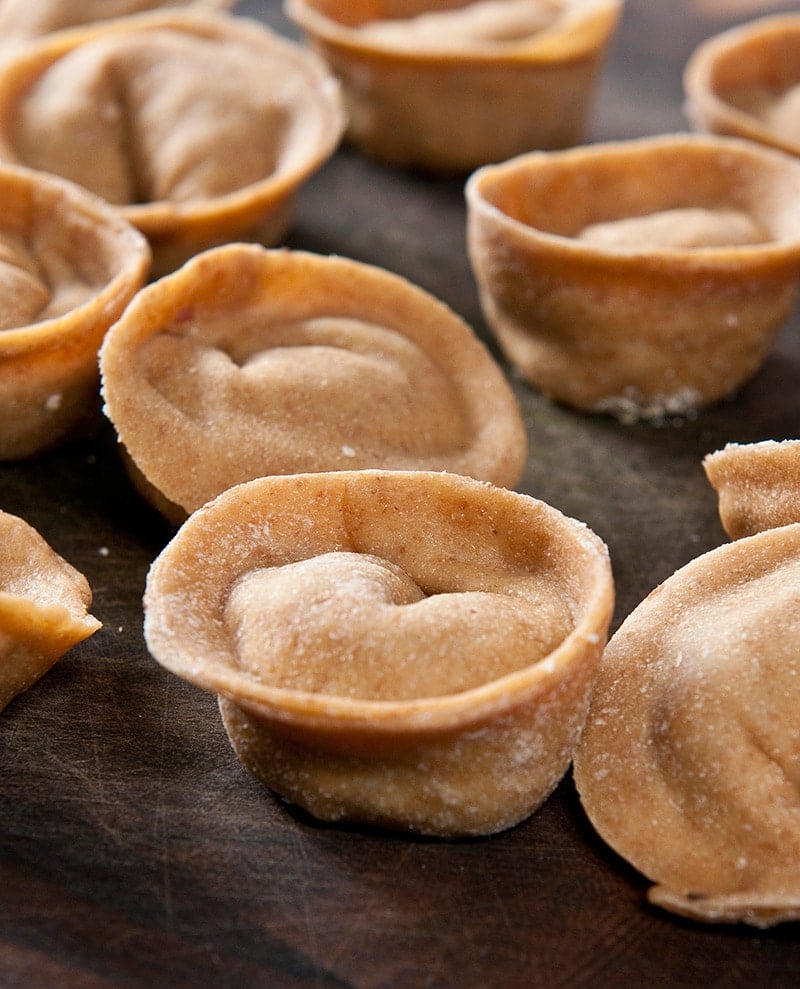
A few dumplings cannot wash away a lifetime of ambivalence, but I feel differently about bear now. We all hold food prejudices — I won’t be eating dogs or cats anytime soon — and most are based on culture, not flavor.
Some people lump bears into the dog-and-cat category, but growing up I’d read so many stories about early Americans eating bear that it seemed more antiquated than obscene; in my mind, bear had always teetered on the edge of acceptability.
These dumplings pushed it over the edge for me. Eating the last dumpling, I thought of one of my favorite Swahili sayings: Wanyama ni nyama tu. All meat is meat. Even bears.
Pelmeni, Russian Bear Dumplings
Ingredients
FILLING
- 2 pounds bear meat, or any other meat
- 3/4 pound pancetta or bacon
- Salt
- 4 cloves garlic, minced
- 2 tablespoons black pepper
- 2 tablespoons butter, lard or bear fat
- 1 large onion, chopped
DOUGH
- 2 cups spelt, whole wheat, farro or einkorn flour
- 2 cups all-purpose flour
- 1 teaspoon salt
- 1 cup buttermilk or whey
- 6 egg yolks
Instructions
- If you are making the sourdough version, start 3 days in advance. Mix the spelt flour and salt with egg yolks and the buttermilk or whey into a batter, cover with plastic wrap and leave on the counter. Every day add 1/2 to 1 cup of regular flour, mixing well. Keep the dough covered.
- To make the filling, slice the bear and bacon into 1-inch chunks, making sure to remove all silverskin from the meat. Toss with the black pepper and garlic. If you are using uncured pork, like pork fat or pork shoulder, add 2 tablespoons kosher salt. If you are using bacon, salt pork or pancetta, add a teaspoon. Put the mixture in the freezer.
- Heat the oil or butter over medium-high heat and saute the onion until it just begins to brown, about 5-6 minutes. Move the onion to a sheet pan or large plate to cool.
- While the onion is cooling, you can make the quick dough or finish the sourdough. Mix the remaining flour with the rest of the dough ingredients and knead well. If you are doing a sourdough, you will need to punch the dough down before kneading. Add enough regular flour while kneading to make sure the dough is no longer sticky. Knead at least 5 minutes.
- Coat the dough with a little oil and cover with plastic wrap. leave it for at least an hour.
- Take the meat and fat mixture from the freezer and mix it with the cooled onions. Grind everything through a meat grinder fitted with the fine die. Alternatively, pulse everything fine in a food processor. Do not make a paste. Mix the meat well with your (very clean) hands and set in the fridge. Clean up before proceeding.
- There are two ways to roll out the dough. Traditionally, you roll the dough into a long snake the diameter of a walnut. Cut off pieces and roll them flat with a rolling pin; you want them to be 1/16 of an inch thick. Or, is you have a pasta maker, roll the dough out to a medium setting. My Atlas’ thinnest setting is No. 9, so I went to No. 5. Cut out 2-inch circles with a cutter or wineglass.
- Fill each dumpling with a scant tablespoon of filling. Fold over the circle into a half-moon and, if you want, pinch the ends of the half-moon together to make a circular dumpling that has a rim.
- Boil the dumplings for 6-8 minutes to make sure the bear or pork has fully cooked. Serve with sour cream mixed with dill and black pepper.
Notes
Nutrition
Nutrition information is automatically calculated, so should only be used as an approximation.
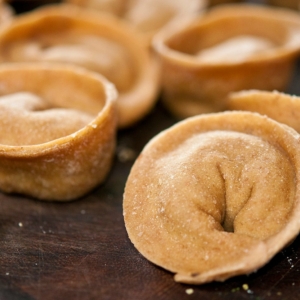
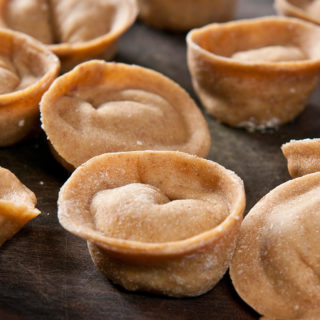
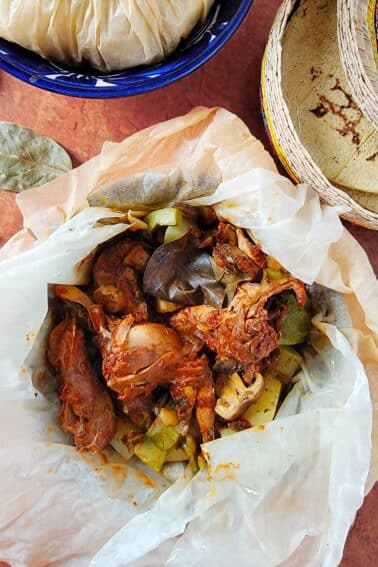

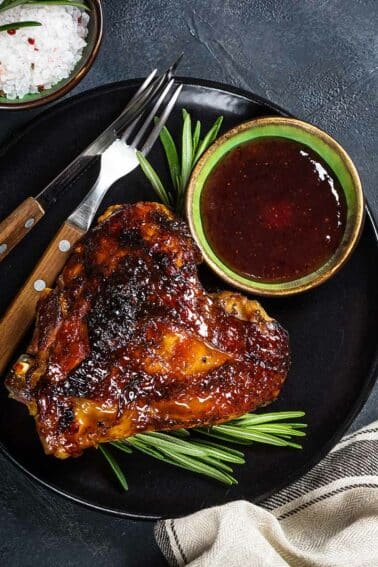

I have eaten bear only once and that over 60 years ago, one my boss shot as it was trying to wrestle a sow out of her pen on a ranch east of Redding. Can’t rmember how it tasted except that it had a sweeter flavor than usual meats.
In the biography my grandmother wrote about my grandfather William Kent, who was a very avid hunter and outdoorsman, she mentions that he always kept bear fat for cooking because it could be heated far beyond other fats without flaming.
I definitely respect your right to eat bear meat, game in general, etc…. and respect the longtime history of killing bears for the sustenance they provide! However, some strange longheld aversion must be at play for me regarding bear meat. Somehow, I just feel differently about bear and horse, than about pig and cow. I suspect that pushing myself on this front might cause me to actually give up pork and beef, not swing out more in the other direction.
But I can’t wait to try the dumplings – with perhaps a different (tentatively onion and cheese) filling!
And, I loved the history you provided too though -fascinating.
Your dumplings look much too pretty to be pelmeni! My favorite are khinkali though. Larger in size and better spiced. I’ve never heard of bear meat filling before either, but I stand corrected. A restaurant in Berlin offers them with bear
https://www.restaurant-bogus.de/empfehlung.php
Your choice of moose, reindeer or boar as well. (Despite the name they seem to exist: https://www.eat-out.net/restaurant-berlin/wr363636-bogus )
I miss meat choices in German restaurants. Lots of game, sometimes provided by a local hunter, but often farmed I think. Not everyone should need to get a gun and buy a tag just to sample a new kind of meat!
Living in a place that has a larger brown bear population than people (SE Alaska), I tend to be on the side of not eating bears, with the idea that they’ll see me as “friendly” and return the favor.
With black and brown bears in the neighborhood many folks hunt brownies just for sport/trophy and do not utilize the meat (I’ve heard reasons ranging from “too fishy” to too much “trichinosis”, if that is possible….), while black bears usually end up as sausage or roast. Love the recipe above, as well as the historical texts researched for ideas.
Lowrah: Yep, it was indeed Everest on Grand! Nice catch.
E. Nassar: I saw that same thread on Cooking Issues. Raccoon looked gnarly. I would have portioned it out.
Rohan: Never eaten kangaroo before. Is it like rabbit? Or is it dark meat?
We have a weird similar thing here in Australia with Kangaroos. But the truth of the matter is that Kangaroo have a minimal impact on the environment compared to introduced sheep and cattle and the meat is on of the leanest red meats available. It’s because they are cute and bouncy. But they have been providing a regular source of meat for Aborigines for 40,000+ years. So what’s changed?
Having hunted black bear in northern NH once before, I can tell you that it is pure adrenaline with a good deal of fear and apprehension folded in. You are in their element. Kind of like surfing in shark-infested waters. They know you are there. They can smell you. They know their environment well, and every sound or smell will spook them. I spent 20 hours in a bear stand and never pulled a trigger. I can’t wait to get back up there and try it again.
There is not much better meat grilled than black bear. It is every bit as good as sirloin steak tips. I tried it a few years ago at a wild game dinner while at a decoy show in Jersey. Darn tasty critter! The meat we had was marinated for two days in a smoky wild berry chipotle sauce. Man was it good.
Best,
Nate
Well, Hank, I have no sentimental attachement to bears, but I have to admit the idea of eating one grosses me out a bit. I cannot explain it. Now, if I was invited to your house and you cooked those dumplings, then I’d be happy to try them. I’m just not going to seek one out I guess. Same is true of racoon, armadillo, beaver, I’m just not eating them if I have a choice. They had several of these on cookingissues.com a few months back actually and racoon and beaver just did not seem that appetizing to put it mildly.
I’ve actually ate both ground hog and beaver and they are good if cooked right. The beaver was a young one my brother caught in a muskrat set during his trapping days that we roasted in the oven with carrots and onions. It came out fall apart tender and sweet but wild tasting with just salt, pepper and a bit of garlic for seasoning. Dad would hunt the dairy farm across the road from us for young ground hogs which we boiled a bit then grilled or fire roasted with a ‘white’ vinegar & oil based barbeque sauce. Again, sweet tasting with overtones of wild/gamey and very tender. We were pretty much an exception to the rule though as at least one friend asked us if we were out of meat when he saw the grilling wood chuck. Dad told him that we just wanted a change and didn’t have enough squirrels for a mess of braised squirrels.
Jim trapped out a lot of muskrats as a teenager but we decided not to try them after looking at the first few carcasses. Very fatty with a strong gamey smell, they were totally unappetizing. Dad and I might have cooked one after a thorough cleaning but Mom refused to let one in the house. Interesting fact that ties into the taste of beaver and wood chuck/groundhog: both are primarily plant eaters making the meat milder tasting than raccoon or possum which are omnivores and scavengers.
https://www.everestongrand.com/
Everest on Grand is a wonderful restaurant, and I’m wondering if it is the one you are referring to. The yak momos are really good!
I thought freezing meat for several days at 0F would kill the larval worms too. You did not mentioned that in your post, and that made me curious. So of course I “googled”. Apparently freezing only works for pork, not other meat, as the Trichinella in game meat is much more resistant to freezing. Now I know if my husband comes back with bear (season started today) – freezing not good enough!
This is a fabulous alternative to my usual bear stew. Will have to try. Thanks!
Nice. I’ve still never tried the stuff, although the guys that take me hunting have as the odd one has made a move into their moose camp over the years. I do want to give it a go. That and cougar, which apparently yields wicked lard for pastry dough.
I’ve eaten a lot of pelmenyi in the place that claims them as their own: Udmurtia, just on the European side of the Urals. Never, ever heard that they’d been made with bear once upon a time. Did hear that the filling should be nothing but meat and raw onion. Not that I can state for sure that the Udmurts didn’t once make them with bear. I did get the chance to make some from scratch while I was there. The dough was not like eggy pasta sheets. There was one egg, but mixed with a fair bit of water into the flour. These days they like a mixture of beef and pork for the filling. I only ever had them served boiled, with either smetana (infinitely better than our sour cream) or vinegar, the latter of which was fun because of the pronunciation in Russian: “SOOK-soos-am.” I preferred them with smetana. Some people put chopped scallions on top too. Lots of people over there buy 50-pound bags of pelmenyi and leave them out on their balconies all through the Russian winter. Zero chance of spoilage.
Wow, you really did your homework on that dish. I have family from Khabarovsk, so I’ve had the pleasure of making these a couple times. Though your dough isn’t like what I’ve experienced, I can see why you chose do do it that way.
I made the mistake once of claiming that the dough was similar to a Chinese potsticker, to which I was met with a scowl and told that it was certainly not!! Apparently the Southern Siberian Russians have had some bad territorial disputes with the Chinese. Whoops!
I’ve never had pelmeni in broth, so maybe you’re right about the “poor taste” comment? But, I can certainly attest that mayonnaise and/or butter were always present.
My only rule for meat is that I won’t eat anything that’s endangered. I don’t want to contribute to the end of a species. So I wouldn’t eat polar bear, but black bear, no problem. To that end, I’ve enjoyed a dog soup in South Korea.
All meat is meat. Including dogs:
https://indirectheat.blogspot.com/2010/06/korean-dog-soup.html
I have had bear before. It was when I was a teenager and my then boyfriend went Moose and Bear hunting. The Moose I don’t remember eating but the bear I do. I don’t think I liked it but then again my taste over decades have matured. I do have to say that reading Cork Graham’s Bear Bourginon recipe really hit my funny bone. I now want to try that recipe. Anyone know where I can get a few pounds of Bear stew meat? :—)
I have nothing against eating bear from a sentimental standpoint, but my dad always warned against it, saying the meat was oily. I take it this wasn’t the case for you! I suppose it depends on the bear and the cook.
Those look delicious. I can understand that ambivalence towards eating bear. I’m not quite sure what it is. Maybe people saying that it’s not very good? Maybe the fact that they do eat meat, but then so do pigs and I’m not against eating them. Who knows?
Makes me want to get a bunch of new books, Hank–great take on American tastes and bear!
Winnie the Pooh and the Teddy Bear did it for me. But, once I tasted bear for the first time, and considering how much the CA bear population has exploded, even taking over ancient brown bear areas, I can’t get enough!
On the topic of meat care, you betcha! I had that bear gutted within 15 minutes of the kill, and skinned within an hour, and its quarters cool to the touch within two hours of the shot. If everyone treated their game like a fine butcher treats a freshly killed steer, game table horror stories would be a thing of the past!
Interesting stuff indeed! I remember reading somewhere about trichinosis in bears, and that turned me off the idea a bit. The dumplings look fantastic mate – love the idea of sour cream with them, and in broth I bet they would be fantastic too.
What are your plans for the bear meat?